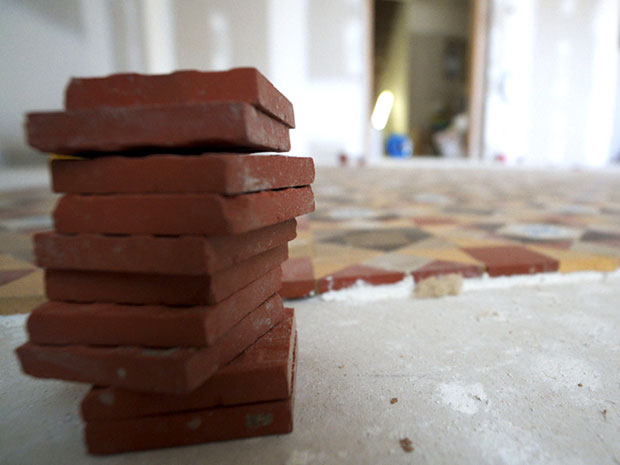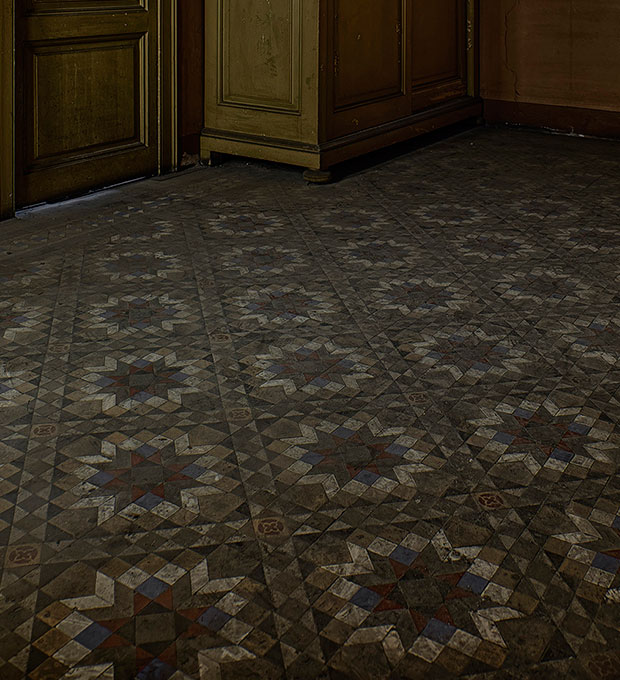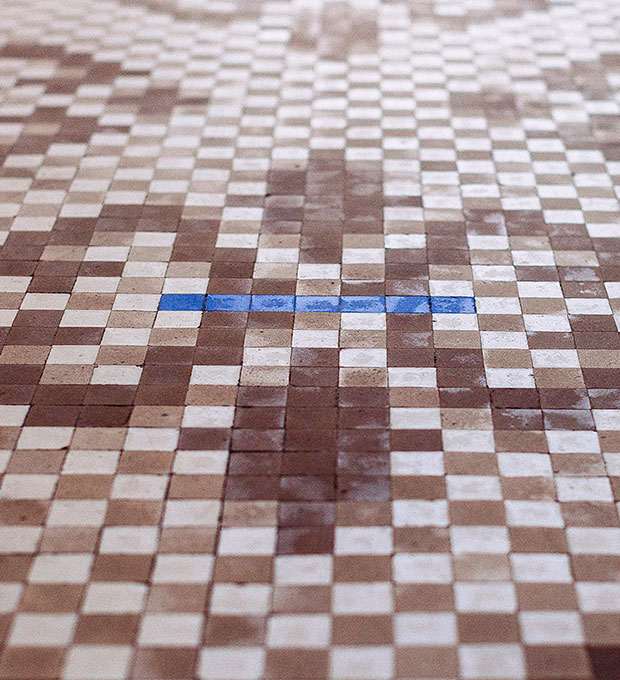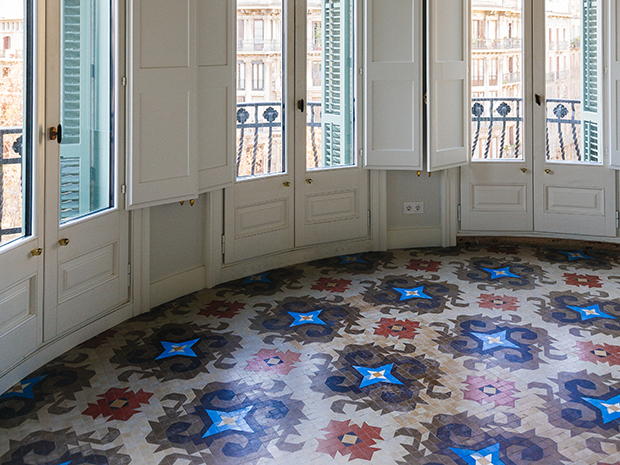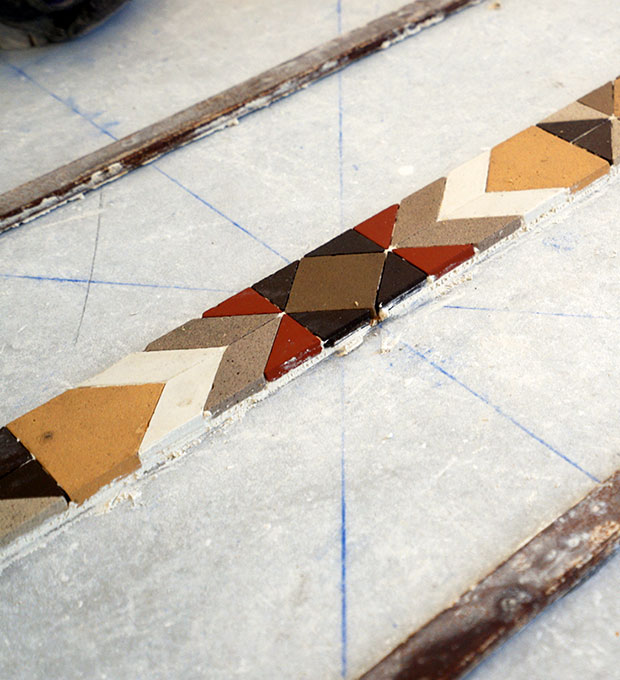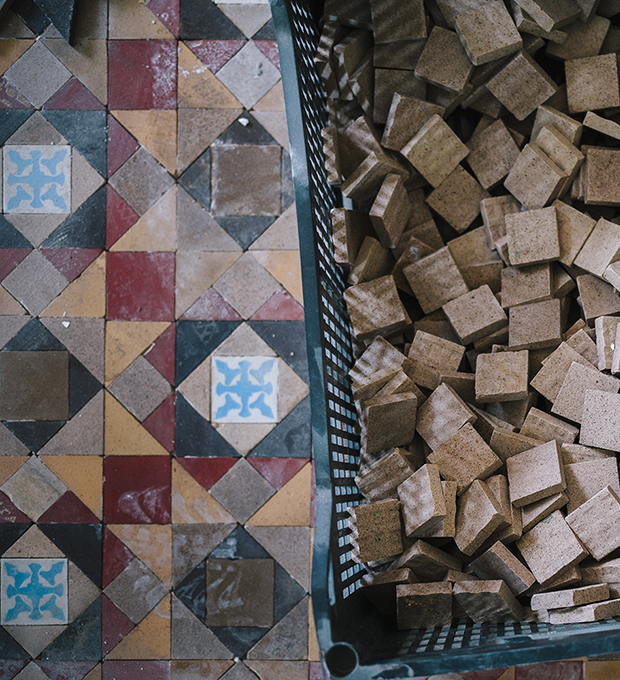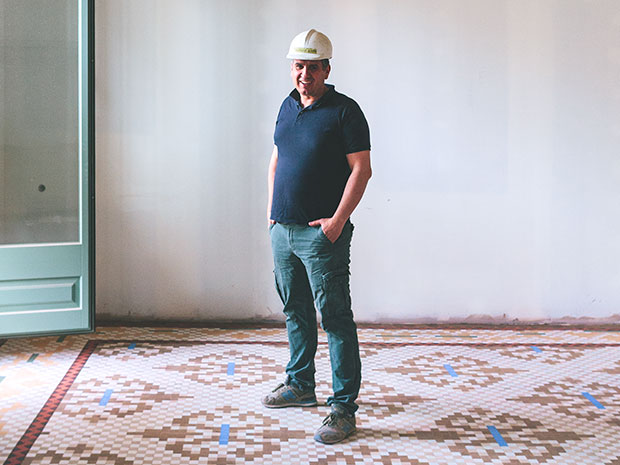The floors in Casa Burés feature mosaics made out of thousands of stoneware tiles arranged in beautiful geometric designs. These geometric tesserae, or tiles, are known as Nolla mosaic, after Miguel Nolla, the Catalan entrepreneur who began manufacturing them in Valencia in 1860.
Nolla mosaics can be found in many of the most prominent Modernist buildings in Barcelona and other European cities. Very specialised craftsmen, known as “mosaiqueros”, put a great deal of time and effort into manufacturing them and putting them in place. As a result, having a Nolla mosaic became a symbol of distinction and power for homeowners. The smaller the tile and the more elaborate the geometric design, the greater the reputation.
